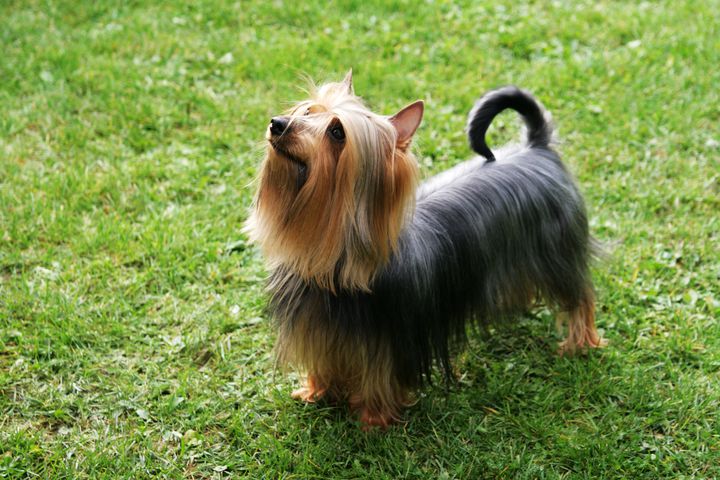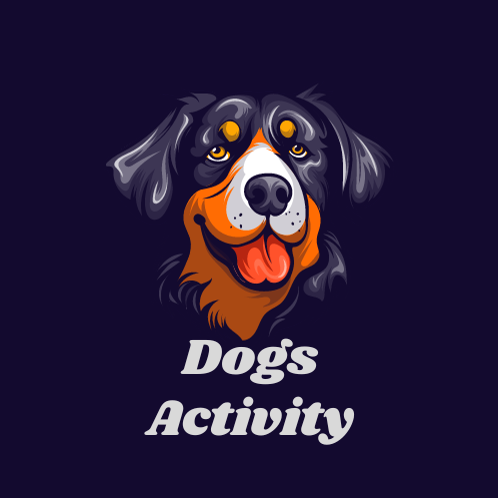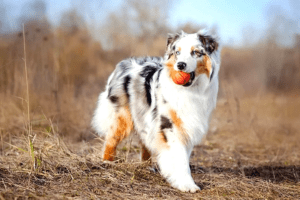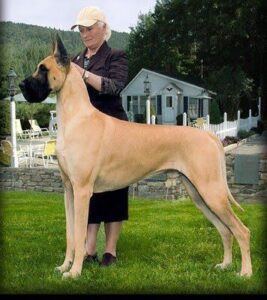
Dogs, our faithful companions and steadfast allies, have shared a profound connection with humankind since time immemorial. Within the realm of these loyal and loving creatures, some breeds stand as living testaments to a rich history and an ancient lineage. These oldest dog breeds have not only weathered the tides of time but have also etched their place in the annals of human civilization. Their stories are woven into the tapestry of our shared history, offering us glimpses into the dawn of our partnership with these remarkable creatures. In this exploration, we embark on a journey through the origins, evolution, and enduring legacy of the world’s oldest dog breeds, uncovering the remarkable tales that have shaped their existence and solidified their place in the hearts of dog enthusiasts worldwide.
Ancient Canine Ancestry: Unraveling the Origins of Domestication
The origins of our intimate relationship with dogs can be traced back to the distant past, where the ancient partnership between humans and canines began to take root. Archaeological evidence suggests that the process of dog domestication commenced around 15,000 years ago, as humans transitioned from a nomadic, hunter-gatherer lifestyle to settled agricultural communities. During this transformative period, certain wolves exhibited behavioral traits that distinguished them from their wild counterparts. These proto-dogs demonstrated a remarkable affinity for human company, initiating a gradual process of domestication and selective breeding that eventually led to the emergence of distinct dog breeds we recognize today.
The Saluki: Guardian of Ancient Egypt’s Nobility
One of the oldest known dog breeds, the Saluki, boasts a storied history that dates back to ancient Egypt, where it was revered as a symbol of nobility and grace. Depictions of the Saluki can be found in the tombs of pharaohs, highlighting its esteemed status as a companion to royalty. Known for its slender build, exceptional speed, and keen hunting prowess, the Saluki played an integral role in assisting Egyptian nobility during their hunting expeditions. Its loyalty and elegance made it a cherished and esteemed member of ancient Egyptian society, solidifying its position as one of the most revered and ancient canine breeds in history.
The Basenji: Africa’s Vocal and Intelligent Hunter
Hailing from the African continent, the Basenji is celebrated for its intelligence, agility, and unique vocalizations, earning it the nickname of the “barkless dog.” This ancient breed traces its lineage back to the regions of Central Africa, where it served as a proficient hunter, assisting local tribes in tracking and capturing elusive prey. The Basenji’s characteristic yodel-like vocalizations, instead of typical barking, distinguished it from other canines, making it an invaluable asset in hunting scenarios that required stealth and silence. Its ancient roots and distinctive traits have made the Basenji a fascinating subject of study for canine enthusiasts and historians alike.
Chinese Shar-Pei: The Wrinkled Guardian of Ancient China
Originating from the vast lands of ancient China, the Chinese Shar-Pei has a distinctive appearance characterized by its loose, wrinkled skin and a formidable yet affectionate demeanor. Bred for a multitude of roles, including herding, hunting, and guarding, the Shar-Pei’s physical attributes served as a natural armor, providing protection against potential adversaries. Its unwavering loyalty and versatile skill set made it an indispensable companion to farmers and villagers, and its unique appearance set it apart as a symbol of strength and resilience within Chinese culture. Despite its ancient lineage, the Chinese Shar-Pei continues to captivate the hearts of dog lovers worldwide, embodying the enduring spirit of ancient canine heritage.
Akita Inu: Japan’s Symbol of Loyalty and Courage
The Akita Inu, originating from the mountainous regions of Japan, has long been regarded as a symbol of loyalty, courage, and good fortune within Japanese culture. This ancient breed’s unwavering devotion and protective instincts have cemented its position as a cherished guardian and companion, with historical accounts detailing its role as a symbol of prosperity and good luck in Japanese folklore. Revered for its strength, dignity, and unwavering loyalty to its human companions, the Akita Inu remains a living embodiment of Japan’s rich cultural heritage and enduring reverence for the profound bond between humans and canines.
Survival Through Centuries: Adaptive Traits and Enduring Legacies
The resilience of the oldest dog breeds is a testament to their adaptive capabilities, enabling them to thrive across diverse landscapes and climatic conditions throughout history. From the frigid terrains of the Arctic to the scorching deserts of Africa, these ancient breeds have demonstrated remarkable endurance and versatility, showcasing their ability to adapt to a myriad of environmental challenges. The Siberian Husky, bred in the harsh conditions of Siberia, exemplifies this adaptability, having been instrumental in the daily lives of the Chukchi people, who relied on these robust canines for transportation and survival in the unforgiving Arctic landscape. With their endurance, strength, and unwavering work ethic, Siberian Huskies have not only thrived in challenging environments but have also earned a special place in the hearts of dog enthusiasts worldwide, serving as beloved companions and reliable working dogs.
The Afghan Hound, renowned for its regal appearance and graceful demeanor, has navigated through centuries of history, adapting to diverse terrains and cultural landscapes with an air of aristocratic elegance. Originally bred for hunting purposes in the rugged terrains of Afghanistan and neighboring regions, the Afghan Hound’s refined hunting skills and endurance have been honed over generations, reflecting the deep connection between these ancient breeds and the civilizations that nurtured them. Their ability to adapt to changing environments and circumstances has solidified their position as enduring symbols of cultural heritage and resilience, leaving an indelible mark on the legacy of ancient dog breeds worldwide.
Preservation and Challenges in the Modern Era
In the wake of modern challenges and shifting societal trends, the oldest dog breeds face a multitude of obstacles that threaten their genetic diversity, health, and traditional roles. Issues such as inbreeding, genetic health concerns, and diminishing population numbers have posed significant challenges to the preservation of these ancient breeds. In response, various organizations and breed enthusiasts have spearheaded initiatives aimed at promoting responsible breeding practices, genetic diversity, and the conservation of ancient canine heritage.
The American Kennel Club (AKC) and the Fédération Cynologique Internationale (FCI), along with other breed-specific organizations, have played a pivotal role in raising awareness about the importance of maintaining the genetic integrity and historical significance of these venerable breeds. Through educational programs, health screenings, and advocacy for sustainable breeding practices, these initiatives strive to ensure the longevity and well-being of the oldest dog breeds for generations to come. The integration of modern technologies, including advanced genetic testing and veterinary care, has further bolstered these preservation efforts, fostering a comprehensive approach to safeguarding the health and authenticity of these ancient breeds in the face of contemporary challenges.
Cultural Significance and Enduring Legacy
Beyond their biological and historical significance, the oldest dog breeds hold a profound cultural and symbolic value within the collective consciousness of various societies. Revered as companions to royalty, guardians of sacred temples, and loyal allies in the pursuit of sustenance, these canines have left an indelible mark on the cultural tapestry of human existence. Their representations in art, literature, and folklore continue to resonate with audiences worldwide, immortalizing their contributions to the diverse heritage of human civilization.
The Greyhound, celebrated for its unmatched speed and grace, has been revered in multiple ancient civilizations, including those of the Egyptians, Greeks, and Romans, symbolizing nobility and agility. Similarly, the Pekingese, originating from imperial China, has been associated with notions of strength and protection, its lion-like appearance serving as a symbolic representation of power and guardianship. These cultural narratives surrounding the oldest dog breeds have transcended temporal boundaries and geographical barriers, encapsulating the enduring bond between humans and their canine companions.
Looking Ahead: Safeguarding the Legacy of Oldest Dog Breeds
As we navigate the complexities of the modern world, it is crucial to recognize and honor the legacy of the oldest dog breeds, ensuring their continued preservation and appreciation for generations to come. By fostering responsible breeding practices, advocating for genetic diversity, and promoting awareness of the historical and cultural significance of these venerable canines, we can uphold their enduring legacies and perpetuate the profound bond between humans and their canine counterparts. Through collaborative efforts in education, research, and conservation, we can celebrate the resilience, loyalty, and unwavering companionship that define the extraordinary journey of these ancient breeds throughout the ages.
Conclusion
The oldest dog breeds stand as living embodiments of the enduring partnership between humans and canines, representing a timeless bond that transcends the confines of time and space. From the noble Saluki of ancient Egypt to the resilient Siberian Husky of the Arctic tundra, these remarkable breeds have left an indelible imprint on the narrative of human history, epitomizing the virtues of companionship, loyalty, and adaptability. As we cherish their remarkable legacies, let us continue to honor and preserve the essence of these ancient canines, ensuring that their stories endure as a testament to the profound connection between humans and their faithful four-legged companions.



